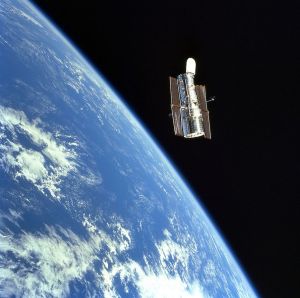This past March, I attended the National Science Teachers Association’s National Conference on Science Education in Chicago. For the past few years, most sessions have revolved around helping teachers understand, and apply, the Framework for K-12 Science Education (NRC, 2011), and the Next Generation Science Standards: For States, By States (NGSS Lead States, 2013) in their classrooms. National leaders such as Stephen Pruitt from Achieve, the organization tasked with writing the standards, and Brian Reiser, from Northwestern University, shared lessons learned since the NGSS were published in April 2013.
One of the primary shifts taking place as teachers learn about and implement the Next Generation Science Standards (NGSS) is from having students learning about a set of topics to figuring out and explaining phenomena. Through the use of scientific/engineering practices and a coherent storyline of investigations, students gather evidence to build explanatory ideas to answer questions about phenomena. The storyline for an individual unit could begin with an anchoring phenomenon, which gives rise to a driving question, followed by a series of sub-questions and phenomena-driven investigations. A set of performance expectations lay out what a student should be able to do at the end of a course of instruction. In short, the science/engineering practices are the tools to enable the students to construct explanations and design solutions.
For example, middle school students will have to “Develop and use a model of the Earth-sun-moon system to describe the cyclic patterns of lunar phases, eclipses of the sun and moon, and seasons.” (NGSS Performance Expectation MS-ESS1-1) This performance expectation specifically calls for students to engage in the science practices of developing and using models, and analyzing and interpreting data, while utilizing the crosscutting concepts of patterns, and scale, proportion, and quantity. Configuring the components of a physical model to display the geometry of the Earth-sun-moon system also incorporates an engineering design component as the students create a 3-d model they can manipulate to gather evidence to support their explanation of the cyclical phenomena of lunar phases and eclipses.
At the same time as these large shifts are taking place in the science education community, this spring the astronomical community is celebrating the 25th anniversary of the launch of the Hubble Space Telescope. Following its launch on April 24, 1990, the Hubble saw first light on May 20, 1990. As reported elsewhere, Hubble was launched with flawed optics, requiring an engineering fix to take full advantage of its position in Earth orbit.
The Hubble Space Telescope brought about a very large shift in how astronomers investigated phenomena before and after deployment. Prior to Hubble, much of astronomy was cataloguing objects, and speculating on their nature without the kind of direct evidence astronomers needed. The advent of the Hubble Space Telescope finally gave astronomers the tool they needed to collect the data necessary to develop more accurate descriptions of star formation, galactic evolution, and the nature of the early universe after the Big Bang. Much of this work is connected to the driving questions of how old is the universe?, and how has the universe evolved over time? Hubble data has helped to answer these, and many other questions, along with discovering previously unknown phenomena.
Like contemporary astronomers, K-12 educators are making similar shifts in how their students experience science in the classroom. Instead of memorizing and cataloging facts, students are asked to develop explanations from real data, create mental models to explain what they observe, and develop logical conclusions and arguments., In fact, Hubble data and images are useful to students for not just learning astronomy, but developing the scientific thinking skills the researchers used to make the discoveries in the first place Rather than merely identifying an image of a planetary nebula or a galaxy, students can now investigate in some detail the processes recorded in the image, discovering their context within the greater cosmos.
The additional object lesson for students is how engineers solved the problem with Hubble’s optics, and designed a fix to allow the telescope to obtain the kind of data it was designed to collect. Of course the whole concept of placing a telescope into orbit beyond the atmosphere was a designed solution to the problem of trying to completely study objects through atmospheric distortion and filtering of important wavelengths of light. In some ways an engineering process analogous, albeit far more complex, to a student’s quest to design and build a better means of protecting an egg when dropped from a height of several meters.
What this really says is a teacher implementing an instructional model grounded in the Next Generation Science Standards is a powerful tool to help students achieve competence in engaging in scientific and engineering activities, much as the Hubble Telescope is a powerful tool for astronomers. The ultimate result are more scientifically literate adults, some of whom will go on to design future generations of space telescopes, making discoveries we cannot even imagine today.
A version of this post originally appeared as the Education Matters column in the spring 2015 issue of Mercury, a magazine published by the Astronomical Society of the Pacific.


